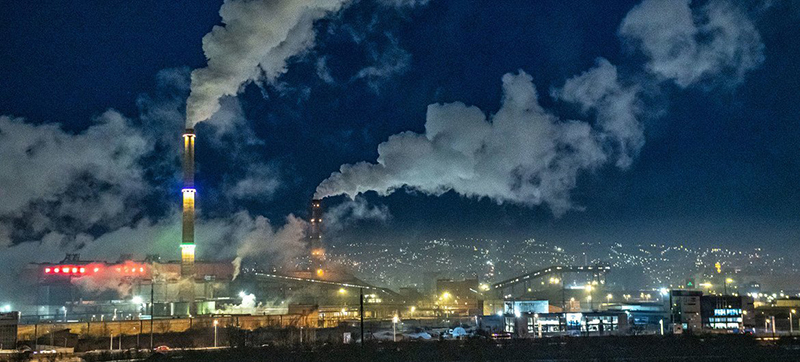 Air Pollution
Air Pollution
Almost everyone now breathing polluted air, warns WHO
New York: An astonishing 99 per cent of the world’s population breathes polluted air that exceeds internationally approved limits, with negative health impacts kicking in at much lower levels than previously thought, UN medical scientists said on Monday.
Noting that fossil fuels are responsible for most of the harmful emissions that are linked to acute and chronic sickness, the World Health Organization (WHO) called for tangible steps to curb their use.
The UN agency also urged more governments to take note that it has made significant revisions to its air quality indicators, including for particulate matter - known as PM2.5 - that can enter the bloodstream, along with nitrogen dioxide (NO2), another common urban pollutant and precursor of particulate matter and ozone.
Lower level
“It has been recognised that air pollution has an impact at a much lower level than previously thought,” said Dr. Sophie Gumy, Technical Officer at WHO’s Department of Environment, Climate Change and Health.
“So, with all the new evidence that has come up over the last 15 years since the last WHO air quality guideline update, most of the values of the guidelines levels have been reduced. So (for) particulate matter it has been reduced by two, and for nitrogen dioxide it has been reduced by four.”
According to the WHO, low and middle-income countries still experience greater exposure to unhealthy levels of particulate matter compared to the global average, but nitrogen dioxide patterns “are different, showing less difference between high and low and middle-income countries”.
Invisible danger
The agency’s data indicates that 4.2 million people die from exposure to outdoor air pollution, in addition to the 3.8 million whose deaths are linked to household smoke produced by dirty stoves and fuels.
And based on WHO’s mathematical modelling of available air pollution data from 80 per cent of the world’s urban areas, it indicates that almost every one of us faces an increased risk of heart disease, stroke, lung disease, cancer and pneumonia.
As depressing and as dangerous as this situation is, the UN health agency insists that momentum has been growing for better air quality everywhere in the last decade.
Proof of this is the fact that more than 6,000 cities in 117 countries now monitor air quality, compared to 1,100 cities in 91 countries a decade ago.
Achieving cleaner air is also one of the 17 Sustainable Development Goals, and an increasing number of UN agencies have passed resolutions urging Member States to address the health impacts of smog-filled air.
Welcoming the increasing number of cities that have begun to measure air quality for the first time, Dr. Maria Neira, Director, WHO Department of Environment, Climate Change and Health, said that it was particularly significant that data is also being gathered on nitrogen dioxide.
NO2 “is a proxy indicator for traffic and it's telling us what is happening at urban level and how this gas that we know that is so damaging and causing so many of respiratory diseases - one of them being asthma - is increasing in many cities around the world.”
Despite this progress, “the bad news is that we still have a majority of cities who do not comply with the air quality guidelines,” said Dr. Gumy. “The people living in them are still breathing unhealthy levels of fine particulate matter and nitrogen dioxide, with people in low and middle-income countries suffering the highest exposures.”
Hot data
Released ahead of World Health Day on 7 April, the 2022 update of the World Health Organization’s air quality database includes for the first time ground measurements of nitrogen dioxide (NO2) and particulate matter with diameters equal or smaller than 10 microns (PM10) or 2.5 microns (PM2.5). Both groups of pollutants originate mainly from human activities related to fossil fuel combustion.
The new air quality database is the most extensive yet in its coverage of air pollution exposure on the ground, WHO says. Some 2,000 more cities/human settlements now record ground monitoring data for particulate matter, PM10 and/or PM2.5, than the last update. This marks an almost six-fold rise in reporting since the database launched in 2011.
Support Our Journalism
We cannot do without you.. your contribution supports unbiased journalism
IBNS is not driven by any ism- not wokeism, not racism, not skewed secularism, not hyper right-wing or left liberal ideals, nor by any hardline religious beliefs or hyper nationalism. We want to serve you good old objective news, as they are. We do not judge or preach. We let people decide for themselves. We only try to present factual and well-sourced news.







